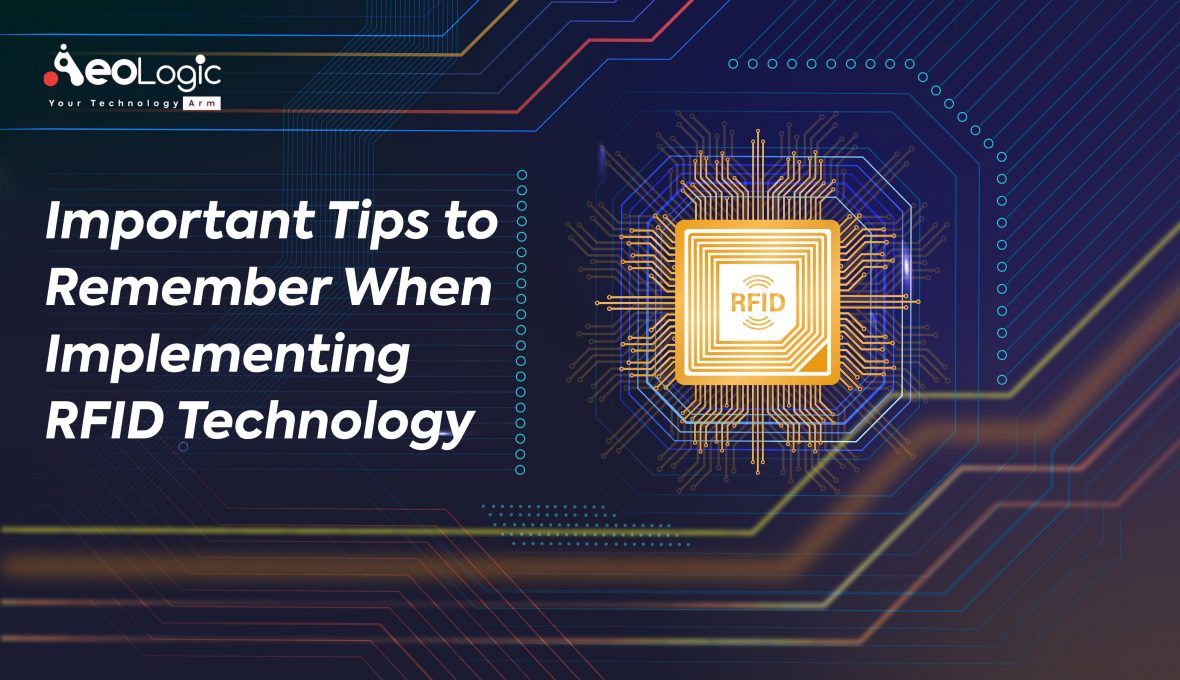In today’s technologically advanced world, Radio Frequency Identification (RFID) technology has emerged as a powerful tool for businesses across various industries. Whether you’re in retail, logistics, healthcare, or manufacturing, implementing RFID can revolutionize your operations, enhance efficiency, and boost productivity. However, like any new technology, RFID implementation requires careful planning and execution to ensure its successful integration into your business processes. To help you navigate this exciting journey, here are 10 important tips for implementing RFID technology effectively.
10 Tips for Implementing RFID Technology
To maximize the benefits of RFID implementation, you can consider the following tips for Implementing RFID Technology:
1. Clearly Define Your Objectives
Before embarking on an RFID implementation, it’s crucial to clearly define your objectives and determine how RFID will benefit your business. Are you looking to improve inventory management, enhance supply chain visibility, or streamline asset tracking? By identifying your goals, you can tailor the RFID solution to meet your specific needs, ensuring a successful implementation.
2. Conduct a Thorough Readiness Assessment:
Assessing your organization’s readiness for RFID implementation is vital. Evaluate your existing infrastructure, processes, and staff capabilities to identify any potential roadblocks or gaps that need to be addressed. This assessment will enable you to plan for the necessary resources, infrastructure upgrades, and training programs to ensure a smooth transition.
3. Choose the Right RFID System
Selecting the appropriate RFID system is critical to achieving desired outcomes. Consider factors such as read range, tag type (passive or active), frequency, and integration capabilities. Collaborate with RFID solution providers who understand your industry and can offer tailored solutions aligned with your business requirements.
4. Start with a Pilot Project
Launching a pilot project before full-scale implementation allows you to test the RFID system in a controlled environment. Identify a specific area or process where RFID can make an immediate impact and evaluate its performance, reliability, and compatibility with existing systems. This approach will help you identify potential challenges early on and make necessary adjustments before scaling up.
5. Establish Strong Data Management
RFID technology generates a vast amount of data, which can be overwhelming if not properly managed. Establish robust data management practices to collect, store, analyze, and interpret the information efficiently. Implement data validation and cleansing procedures to ensure accurate and reliable data, empowering you to make informed business decisions.
Also Read: RFID Vs Barcode: Why RFID is Better for Asset Tracking
6. Train and Educate Your Workforce
To ensure a successful RFID implementation, provide comprehensive training and education to your workforce. Help them understand the benefits of RFID, familiarize them with the new processes, and teach them how to operate the technology effectively. A well-trained workforce will embrace the change and contribute to the successful adoption of RFID in your organization.
7. Optimize Integration with Existing Systems
Integrating RFID technology with your existing systems, such as Enterprise Resource Planning (ERP) or Warehouse Management Systems (WMS), is essential for seamless operations. Collaborate with your IT team or external vendors to ensure smooth data flow, real-time updates, and compatibility between RFID and your other business applications.
8. Conduct Regular System Maintenance
Regular system maintenance is crucial to keep your RFID infrastructure running smoothly. Develop a maintenance schedule and allocate resources to perform routine checks, test equipment functionality, and address any issues promptly. Proactive maintenance ensures the longevity and optimal performance of your RFID system.
9. Monitor and Evaluate Performance
Continuously monitor and evaluate the performance of your RFID system to identify areas for improvement and maximize its potential. Analyze key performance indicators (KPIs) such as read accuracy, read rates, inventory accuracy, and process efficiency. By tracking these metrics, you can optimize your RFID implementation and achieve your desired outcomes.
10. Stay Informed about RFID Innovations
RFID technology is continually evolving, with new advancements and innovations emerging regularly. Stay up-to-date with industry trends, attend conferences, and engage with RFID experts to gain insights into the latest developments. By remaining informed, you can leverage new features and functionalities to enhance your RFID implementation further.
Also Read: RFID Solutions for Healthcare Industry
How to Choose RFID Partner for your Project
When it comes to selecting an RFID partner for your project, it is crucial to exercise careful consideration. Here are some key points to keep in mind:
- Prioritize Expertise and Experience: Look for an RFID partner who possesses in-depth knowledge and extensive experience in the field. This will ensure that they have a solid understanding of the technology and can offer valuable insights and guidance.
- Avoid Biases: It is advisable to choose an RFID partner who is not biased towards any specific middleware or hardware platform. Instead, opt for a partner who has a track record of developing customized solutions for their clients, demonstrating their ability to adapt and cater to individual needs.
- Scalability and Long-Term Approach: Ensure that your chosen partner adopts a long-term perspective and offers scalable solutions. This will enable your RFID implementation to grow and evolve with your business requirements over time.
- Proven and Effective Processes: Verify that your potential partner follows a well-defined and proven process in their RFID implementation projects. This indicates their professionalism and reliability, increasing the likelihood of a successful outcome.
By carefully selecting the right RFID partner, you can enhance the chances of a seamless and successful implementation that aligns with your business objectives.
How Aeologic Technologies is the Best RFID Solution Provider
When it comes to RFID technology, Aeologic Technologies stands out as a trusted and reliable partner. With their expertise, customized approach, advanced technology, and proven track record, they are the best choice for all your RFID solution needs. Your Best RFID Solution Provider:
- Expertise and Experience: Benefit from our team’s extensive knowledge and experience in RFID technology.
- Customized Solutions: We create tailored RFID solutions to meet your unique needs and goals.
- Cutting-Edge Technology: Stay ahead with our utilization of the latest RFID hardware and middleware platforms.
- Proven Track Record: Count on our successful track record and trusted reputation in delivering effective RFID solutions.
Also Read: RFID Asset Management Solutions for Your Operation
Final Words: Tips for Implementing RFID Technology
Implementing RFID technology can bring numerous benefits to your business, from improved inventory management to streamlined operations and enhanced customer satisfaction. By following these 10 important tips, you can navigate the implementation process successfully. Remember to define your objectives, conduct a readiness assessment, choose the right RFID system, start with a pilot project, establish strong data management practices, train your workforce, optimize integration with existing systems, perform regular maintenance, monitor performance, and stay informed about RFID innovations. With these tips in mind, you’ll be well-equipped to harness the full potential of RFID technology and drive your business towards greater success.
In your quest to optimize your business with either RFID technologies, Aeologic Technologies stands ready to assist. Don’t hesitate to reach out and begin your journey towards a more efficient and effective asset management system today. We’re here to guide you every step of the way.






